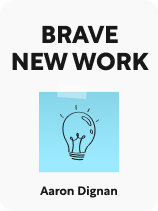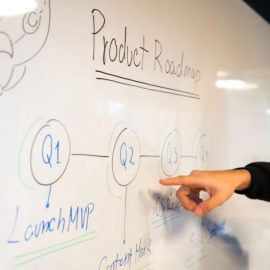

This article is an excerpt from the Shortform book guide to "Brave New Work" by Aaron Dignan. Shortform has the world's best summaries and analyses of books you should be reading.
Like this article? Sign up for a free trial here.
How do you create a positive work culture? What are the benefits of autonomy and flexibility at work?
In Brave New Work, Aaron Dignan discusses how traditional organizational structures are both economically inefficient and less enjoyable for workers. His solution is to revolutionize organizations by providing autonomy for employees and flexible structures.
Continue reading about how to create a positive work culture that your employees will enjoy.
1. Employee Autonomy
The first step to learning how to create a positive work culture is by giving your employees autonomy. Dignan’s principle of autonomy is based on the assumption that people are trustworthy, intrinsically motivated, and capable of problem-solving. In a context where leaders expect these qualities in their employees, Dignan believes that employees will fulfill these expectations. On the other hand, if leaders believe that people are extrinsically motivated and need to be micromanaged to do good work, people will also internalize and fulfill these expectations.
(Shortform note: The term “stereotype threat” embodies this idea that external expectations about a person’s character or ability impact their performance. Research shows that when people are aware that they might confirm someone else’s negative perception of them, it often causes lower performance in academic settings and the workplace. This phenomenon also contributes to widening inequalities for women, people of color, and other stereotyped groups.)
Having autonomy means that employees control their work as much as possible. This requires leaders to trust individuals and groups to self-manage and make decisions on their own (or with input from peers as needed) rather than simply following instructions from a higher-up. For example, if someone needs new software to finish the project they’re working on, they should be able to purchase it quickly on their own, rather than asking a superior for permission, filling out request forms, and waiting for approval. This process is time-consuming, costly, and frustrates people who are prevented from doing the important work.
(Shortform note: Daniel Pink’s Drive echoes the importance of autonomy in the workplace and clarifies that it’s not just about doing work independently, but having agency (choice that comes from within, not from external pressures) in the work you’re doing and how you complete it. Similar to Dignan, he claims that traditional work environments stifle autonomy and intrinsic motivation when managers assume the worst in others and therefore try to micromanage employees. To rekindle the innate intrinsic motivation in people, Pink recommends providing autonomy in four aspects of their work: the task, time, technique, and team.)
2. Flexible Organizational Structures
In addition to employee autonomy, Dignan’s second foundational principle for effective organizations is flexibility. Flexible organizations can adapt to constantly changing conditions. This means that you can quickly get rid of processes that don’t serve the organization and experiment with new ways of doing things to meet new challenges.
Flexible organizations allow people to problem-solve, rather than trying to predict and control every process from the top down. For example, if a weekly group meeting has become ineffective as a company has grown, the employees should have a simple way to get rid of the meeting and create new meetings as needed. This concept also applies to things like changing pay structures, budgets, and working roles.
| Make Your Organization Antifragile Dignan’s concept of having flexible organizational structures is closely related to Nassim Nicholas Taleb’s theory of being antifragile: having a system that can withstand and benefit from uncertainty and volatility. In Antifragile, Taleb agrees with Dignan that the modern world changes quickly and in unpredictable ways. Therefore, rather than trying to control a complex system such as an organization, some of Taleb’s strategies for becoming antifragile include decentralizing authority in large systems (so there is less risk of catastrophe if one person makes a bad decision) and planning for failure rather than trying to avoid it. In a business context, planning for failure could include assuming that your technology product will eventually become obsolete and planning how you will pivot to a new direction in that scenario, rather than staying hyper-focused on the current product. |

———End of Preview———
Like what you just read? Read the rest of the world's best book summary and analysis of Aaron Dignan's "Brave New Work" at Shortform.
Here's what you'll find in our full Brave New Work summary:
- How organizations can adapt to the rapid pace of change in the modern world
- Why old organizational structures don't work anymore
- How to enable organizations to run themselves through decentralized work






